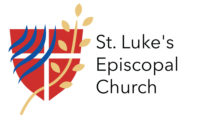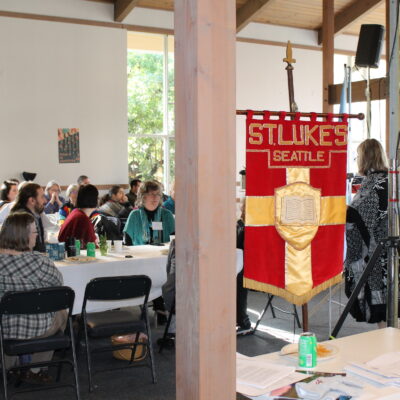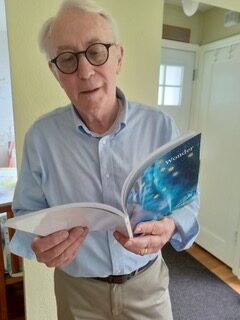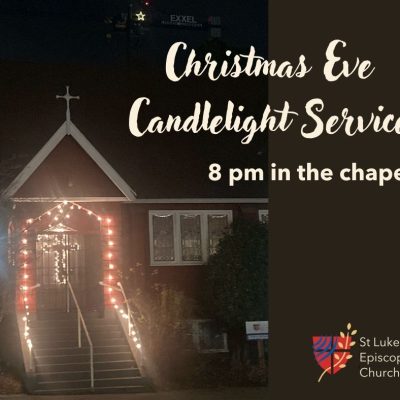If you’ve spent much time churches, you might (like me) have a little bit of baggage with scripture in general, and shepherd imagery in particular.
I think we like to use shepherding stories for children. They’re so … pastoral. So tame. Sheep are so soft and cuddly and kid-friendly.
My childhood lessons of the gospel passage we read this morning focused on one verse: Jesus says “I am the gate, whoever enters by me will be saved”. The lessons focused on some variation of: gates keep good things in and bad things out. Gatekeeper Jesus defends us against the evils of the world so that they never come near us. The important thing, I heard, is to be inside the gate where it’s safe — far from dark valleys where evil and atheists lurk.
But if Jesus is the gate, and the point of believing in Jesus is to be safe — then how do we explain disease, addiction, depression, loss, abuse, and the innumerable other ways that people suffer — and yes, even people who follow Jesus, and yet suffer? Is our gate broken?
It’s only in looking at these “good shepherd” passages as an adult that I’m beginning to realize how much of the text was left out in my childhood verse memorization. Jesus doesn’t stop after “I am the gate, whoever enters by me will be saved” — he continues “whoever enters by me will be saved — and will come in and go out and find pasture.” Jesus says that the shepherd’s job is to call the sheep and lead them out. Which is a very different image than being locked in. Jesus seems to have a goal other than our safety.
The shepherd leads us out of the gated area — out into the world. Out to green pastures, out beside still waters.
//
And out into the darkest valley.
On Friday, I attended the funeral of my friends’ stillborn child.
Months ago, the couple learned that their baby had a genetic disorder. They found out so early that they had the option to terminate the pregnancy, but they decided to parent as best they could for as long as they could. They decided to see where the experience might lead them.
A few days past her due date, their daughter was small but kicking — until she wasn’t. My friend labored for a child she knew would be stillborn — labored, it must have felt, not to bring about life, but for death.
After the funeral service, the grieving mother and I embraced, and as she pulled away she noticed her hand, covered with the ashes of her daughter and the dirt she had, just moments before, buried her with. As she ended the hug and noticed, she instinctively apologized, and we looked at her hand. In a holy half-second, we beheld the messy and dark reality of death. All I could think was, this woman walks through the darkest valley.
And she is not in that valley because she doesn’t love Jesus, or doesn’t follow God. She is not in that valley because she wandered away from the good shepherd. She didn’t choose a path that God wasn’t on. Rather, she is in a dark valley precisely because she was present and attentive to where God led her. She was present to her daughter. She is present to her experience of motherhood. And she is present to her grief.
[Pause.] Both the psalmist and Jesus know that there are rhythms to life. We enter the fold for sustaining rest, and we go out from the fold to encounter both the beauty and the darkness of the world. We enter the gate and we exit. We lie down in green pastures, and walk in dark valleys. Sometimes the two are closer together than we would expect.It strikes me that we read these texts in the Easter season. We read about the walking through the valley of the shadow of death when the memory of Christ’s death is so recent. We state, in the psalm, that even while walking through the darkest valley, we fear no evil — when the memory of Christ’s resurrection is fresh. The Good Shepherd is the one who has willingly walked into the darkest valley without fear — and has showed us that death and darkness are not the end of the story.
These texts, today, make me rethink the whole purpose of the spiritual life. As a child, what was emphasized was safety. As an adult, I doubt that safety is at all the point. God doesn’t seem ultimately concerned that I’m protected from the dark realities of the world. Safety does not seem to be the goal. Preservation does not seem to be the goal.
Jesus tells us that he came that we “might have life, and have it abundantly.” That word “abundantly” is the translation we use for a word that conveys a sense of “an extraordinary amount; going beyond what is necessary.” I love that — that Jesus came for “life beyond what is necessary.”
The goal of spiritual walk, then, is perhaps life beyond what is necessary — life beyond simple self-preservation. Perhaps the spiritual life is about becoming a person who regularly passes through the gate. Becoming a person who is willing to walk in dark places, and can tolerate the fear of darkness.
Perhaps it’s about becoming a person who knows there is no path that God is not already on. A person who trusts that there will be green pastures again, despite the darkness of the valleys in which he sometimes find himself. A person who can be present to the joy and the grief in her midst. A person who acknowledges evil — and yet does not fear it.
Jesus doesn’t promise that we’ll stay inside the safe fold of the gate. And the psalmist doesn’t write only of green pastures and cool waters. Indeed, the psalm seems to take for granted that we will walk dark valleys.
But we are reassured that we never walk them alone.






